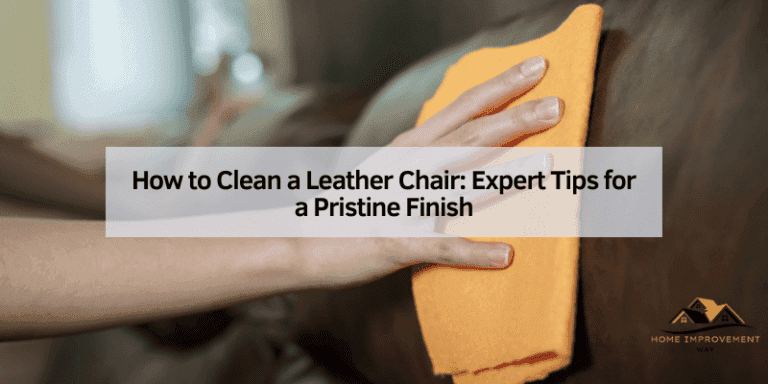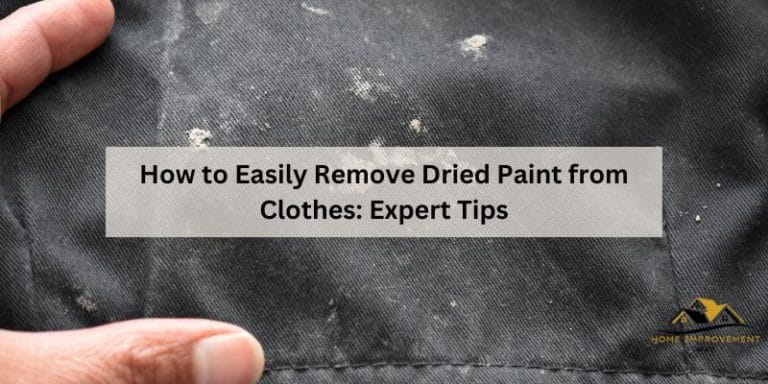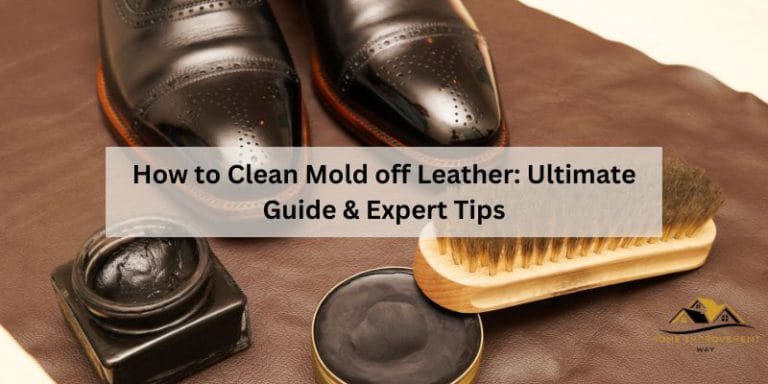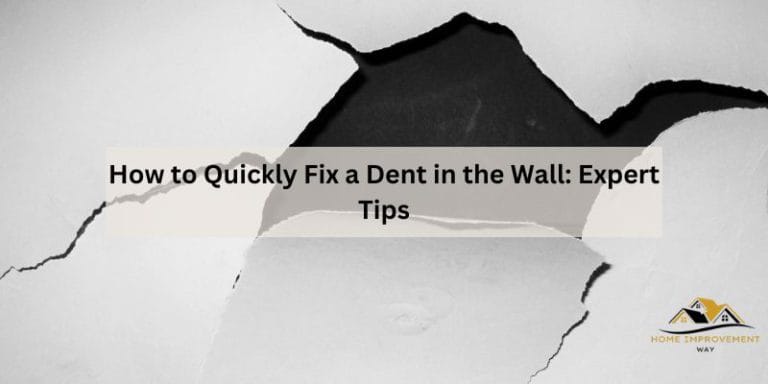How to Remove Efflorescence: Expert Tips for Concrete Block Walls
To remove efflorescence from concrete block walls, use a mixture of equal parts white vinegar and water, scrub the affected areas, and rinse thoroughly with clean water. Efflorescence on concrete block walls can be unsightly and can potentially damage the surface.
Fortunately, there are effective methods to remove it. By using a combination of white vinegar and water, you can create a gentle yet effective solution that will help dissolve the efflorescence. This article will provide step-by-step instructions on how to remove efflorescence from concrete block walls, ensuring that your walls look clean and well-maintained.
So, let’s get started and restore the beauty of your concrete block walls.
What Is Efflorescence?
Efflorescence is a common problem that many concrete block walls face. It is a whitish, powdery substance that forms on the surface of the blocks and can be unsightly. But what exactly is efflorescence? Let’s explore further.
Causes Of Efflorescence
Efflorescence occurs when water-soluble salts that are present in the concrete mix or in the surrounding soil dissolve in water and migrate to the surface of the blocks. When the water evaporates, it leaves behind these salts, resulting in the formation of efflorescence. Some common causes of efflorescence include:
- Poor curing of the blocks
- Excessive moisture exposure
- Inadequate drainage
- Presence of saltwater in the soil
- Water leakage from adjacent structures
- High humidity levels
Appearance Of Efflorescence
Efflorescence can vary in appearance, but it is typically white, powdery, and crust-like. It can also have a crystalline or fluffy texture. The intensity of efflorescence can range from minimal to severe, depending on factors such as the amount of salts present, the moisture levels, and the environmental conditions.
It is important to address efflorescence as soon as it appears to prevent further damage to the concrete block walls and to maintain their overall aesthetics. In the next section, we will explore effective methods to remove efflorescence from concrete block walls.
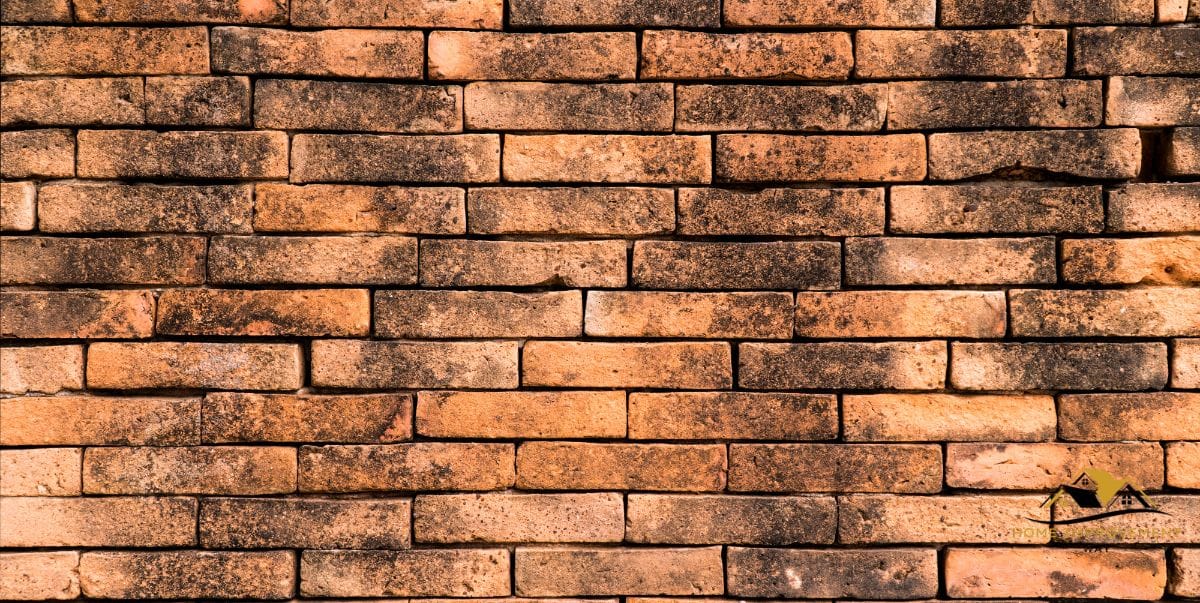
Why Remove Efflorescence?
Efflorescence on concrete block walls can be unsightly and cause damage over time. Learn how to effectively remove efflorescence to restore the appearance and integrity of your walls.
Aesthetics And Curb Appeal
Efflorescence on concrete block walls can be an eyesore for any property. Its presence not only detracts from the overall aesthetics of your space but also impacts the curb appeal of your home or building. Nobody wants to see white or grayish stains marring the beauty of their exterior walls.
When efflorescence accumulates on concrete block walls, it creates an unattractive and unappealing appearance that can make your property look neglected or poorly maintained.
Prevention Of Further Damage
Removing efflorescence from your concrete block walls is crucial in preventing further damage. The presence of efflorescence indicates that there is excess moisture passing through the block wall and evaporating, leaving behind the salt deposits.
If left untreated, this moisture can continue to accumulate, leading to more severe issues such as structural damage, mold growth, and even weakened stability. By removing efflorescence promptly, you can minimize the risk of these problems and protect the long-term integrity of your block walls.
Preparation For Efflorescence Removal
Preparing to remove efflorescence from concrete block walls involves choosing the right cleaning method and preparing the surface. Clean the area thoroughly to remove dirt and debris, then select an appropriate efflorescence remover and follow the manufacturer’s instructions carefully. Allow sufficient time for the cleaning agent to work before scrubbing the surface or rinsing it off to ensure effective removal.
Inspecting The Block Walls
Before proceeding with the efflorescence removal process, it is important to thoroughly inspect the concrete block walls. This step helps identify the extent of the efflorescence problem and determine the appropriate course of action.
Start by visually examining the walls for any signs of efflorescence, which appears as a white, powdery substance on the surface. Pay close attention to areas where moisture is likely to accumulate, such as near drainage pipes or downspouts. Additionally, check for any cracks or gaps that may contribute to water penetration and efflorescence formation.
Take notes of the severity and distribution of efflorescence, as this information will guide you in selecting the most effective removal method and estimating the time and effort required.
Gathering Necessary Tools And Materials
Once you have inspected the block walls and determined the extent of the efflorescence problem, it’s time to gather the necessary tools and materials for the removal process. Having everything prepared beforehand will ensure a smooth and efficient operation.
| Tools | Materials |
|---|---|
| Safety goggles | Lime dissolver or efflorescence cleaner |
| Gloves | Pressure washer or garden hose with spray nozzle |
| Suitable scrub brush or stiff broom | Bucket |
| Protective clothing | Plastic sheeting |
| Putty knife or scraper | Waterproofing sealant or paint |
Make sure you have all the tools and materials listed above readily available. This will save you time and prevent any unnecessary interruptions during the efflorescence removal process.
Methods For Removing Efflorescence
Efflorescence on concrete block walls can be removed using various methods including scrubbing with a mixture of water and vinegar, brushing with a stiff-bristle brush, or using commercial efflorescence removers. These techniques effectively eliminate the white, powdery deposits and restore the appearance of the walls.
Efflorescence, a white powdery substance that appears on concrete block walls, can be a frustrating problem to deal with. Fortunately, there are several effective methods for removing efflorescence. Whether you prefer mechanical methods, chemical methods, or natural methods, there is a solution that will work for you.
Mechanical Methods
Mechanical methods involve physically removing the efflorescence from the concrete block walls. These methods are effective for small areas of efflorescence and can be done using simple tools that you may already have at home.
One common mechanical method is scrubbing the affected area with a stiff brush or wire brush. This helps to loosen and remove the efflorescence from the surface of the concrete blocks. Remember to wear protective gloves and eyewear while performing this task.
Another mechanical method is pressure washing. Using a pressure washer with a high-pressure nozzle, you can forcefully remove the efflorescence from the concrete block walls. However, be cautious not to use too much pressure, as it may damage the surface of the blocks.
Chemical Methods
Chemical methods involve using specific substances to dissolve and remove the efflorescence from the concrete block walls. These methods are particularly effective for larger areas of efflorescence or stubborn stains that cannot be removed easily with mechanical methods.
One commonly used chemical method is using an efflorescence cleaner or remover. These products are specially formulated to break down the white deposits on the surface of the blocks. Follow the instructions provided by the manufacturer for the best results and ensure proper ventilation while using these chemicals.
Another chemical method is using an acid solution, such as a mixture of vinegar and water or a mild muriatic acid solution. These acidic solutions help to dissolve and remove the efflorescence from the concrete blocks. However, it is vital to handle these solutions with care and follow safety precautions to avoid any accidents or damage to the surrounding areas.
Natural Methods
Natural methods involve using eco-friendly and non-toxic substances to remove efflorescence from concrete block walls. These methods are an ideal choice for those who prefer a more environmentally friendly approach.
One effective natural method is using a paste made of baking soda and water. Apply the paste to the affected area and let it sit for some time. Then, scrub the area with a brush and rinse it thoroughly with water. This natural cleaning solution helps to break down and remove the efflorescence without any harsh chemicals.
Another natural method is using white vinegar. Spray or sponge the vinegar onto the concrete block walls, paying extra attention to the areas with efflorescence. Allow the vinegar to sit for a few minutes, and then scrub the area with a brush. Rinse the walls thoroughly with water afterward.
In conclusion, to effectively remove efflorescence from concrete block walls, mechanical methods, chemical methods, and natural methods can be used. Choose the method that suits your preferences and the severity of the efflorescence. Regular maintenance and proactive measures can help prevent the reoccurrence of efflorescence and keep your concrete block walls looking clean and appealing.

Preventing Efflorescence
Efflorescence can be a frustrating problem for concrete block walls. However, there are several preventive measures that can be taken to minimize or eliminate its occurrence. By following proper construction techniques, sealing and waterproofing the walls, and ensuring proper drainage and ventilation, you can significantly reduce the chances of efflorescence formation.
Proper Construction Techniques
Using proper construction techniques is crucial in preventing the formation of efflorescence on concrete block walls. Here are some key steps to consider:
- Ensure that the concrete blocks used are of high quality and free from excessive moisture content.
- Allow adequate curing time for the concrete before applying any finishing materials.
- Properly mix and proportion the mortar used for laying the concrete blocks.
Sealing And Waterproofing
Sealing and waterproofing the concrete block walls can provide an effective barrier against moisture, minimizing the chances of efflorescence formation. Some important points to keep in mind include:
- Choose a suitable sealer or waterproofing product specifically designed for concrete surfaces.
- Thoroughly clean the walls before applying the sealer or waterproofing material to ensure proper adhesion.
- Apply multiple coats of the sealer or waterproofing product for better protection.
Drainage And Ventilation
Ensuring proper drainage and ventilation around the concrete block walls is essential in preventing moisture buildup and efflorescence formation. Consider the following:
- Install proper drainage systems, such as gutters and downspouts, to divert water away from the walls.
- Ensure that the grading around the walls slopes away from the foundation to prevent water accumulation.
- Provide adequate ventilation in the form of vents or air circulation to allow moisture to escape.
By implementing these preventive measures, you can significantly reduce the occurrence of efflorescence on your concrete block walls. Taking the time to properly construct, seal, and provide drainage and ventilation will go a long way in preserving the appearance and integrity of your walls.
Conclusion
In short, removing efflorescence from concrete block walls requires a systematic approach and the right techniques. By understanding the causes of efflorescence, properly cleaning the surface, and applying sealants, you can effectively get rid of this unsightly issue. Remember to regularly inspect and maintain your concrete block walls to prevent the recurrence of efflorescence.
With some patience and diligent effort, you can restore the beauty and integrity of your walls. Take action today and bid farewell to efflorescence once and for all.



